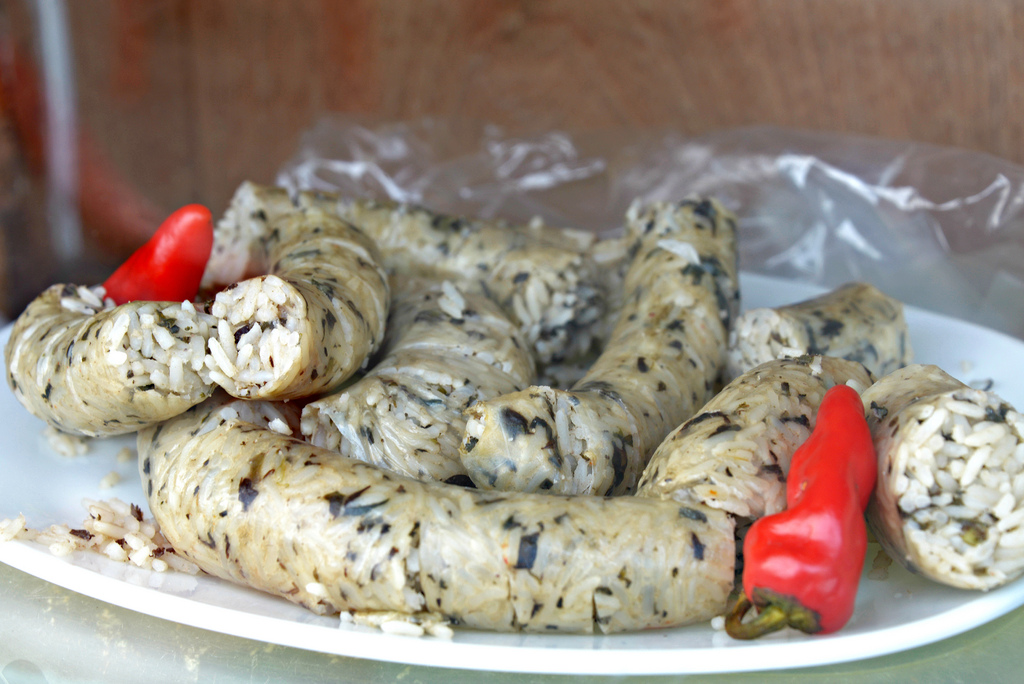White pudding
no blood
White pudding, oatmeal pudding or mealy pudding is a meat dish popular in Great Britain and Ireland. White pudding is broadly similar to black pudding, but does not include blood. Modern recipes consist of suet or fat, oatmeal or barley, breadcrumbs and in some cases pork and pork liver, filled into a natural or cellulose sausage casing. Recipes in previous centuries included a wider range of ingredients. White pudding is often thought of as a very old dish that, like black pudding, was a traditional way of making use of offal following the annual slaughter of livestock. Whereas black pudding-type recipes appear in Roman sources, white pudding likely has specifically medieval origins, possibly as a culinary descendant of medieval sweetened blancmange-type recipes combining shredded chicken, rice and almonds, or as a way of lightening up offal with the addition of cream, eggs and breadcrumbs. Meatless versions were common, as they could be eaten during the Lenten period of abstinence. Many older recipes are sweetened: a 15th-century British pudding combined pork liver, cream, eggs, breadcrumbs, raisins and dates, while a 1588 recipe collection featured a white pudding made of beef suet, breadcrumbs, egg yolk and currants, flavoured with nutmeg, sugar and cinnamon. A similar recipe given in Woolley's 1670 book The Queen-Like Closet used hog's lights and was filled into intestine sausage-skins. By the mid-18th century, Elizabeth Raffald's white pudding recipe, "White Puddings in Skins", combined rice, lard, ground almonds, currants and egg, using sugar, nutmeg, cinnamon and mace as flavourings; by this period the inclusion of offal such as liver or lights, as well as sweet flavourings, was becoming rarer.
Source: Wikipedia
Recipes
